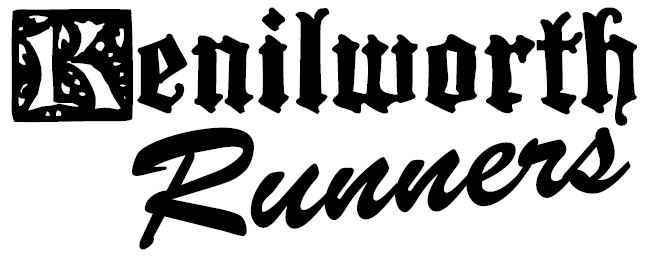
Coaching and Training Bulletin No. 11
Take a complete rest day
Since lockdown many of us have had more time to run and are using running as a way of relieving some stress in our lives. In many cases we are running faster or longer than we normally would to help us wind down a bit more than usual. Many of the current virtual running challenges involve running as many miles as you can. The one thing to make sure you do during this period is to take at least 1 day each week as a complete rest day. No running (or cycling) to give those leg muscles a complete rest and time to recover stronger.
Core Strength and Stability
This week I am concentrating on core fitness. Many runners ask why do I need a strong core and what does this mean? Before answering these questions it would be good to see if your core strength is adequate at present so here is a good test; if you can do this now your core strength is OK. It can be improved but at least it’s a good basis for a runner.
Core Strength and Stability Test
One fairly simple test you can do at home to check your level of core fitness is the Core Strength and Stability Test. Get into the plank position and hold for 60 seconds. Then lift your right arm off the ground and hold for 15 seconds. Return to the original position then repeat with your left arm. From the original position, lift your right leg and hold for 15 seconds. Repeat with your left leg. Then lift your right arm and left leg together, hold for 15 seconds and then repeat with opposing limbs. Finally return to the original plank position and hold for 30 seconds. If you are unable to complete the whole test, you should practice it a few times a week to see progress. Total 3 minutes.
What muscles make up the core?
Many people consider their core only as their abdominal muscles, however it is actually a collection of muscles, which make up your torso and work together to keep your body stable. It is estimated there are close to 30 muscles that constitute the core including muscles of your back, thighs, hips and abdomen. There are two types of muscles your core is split up into: stabilisers (which support the spine) and movers (which support the stabilisers and aid with movement.) A strong core will also support the potential to build strength in other muscle groups and can increase the power and movement in your arms and legs.
What are the benefits of core training?
Core training has many benefits from a sporting perspective and it can also help you carry out everyday movements easily and more efficiently. A good level of core fitness will allow you to complete functional movements and can also reduce lower back pain and injuries. Your balance and agility will also improve through training. Training this area of fitness will improve your overall athletic performance as you will be able to apply more power through other muscle movements with a strong core. Your posture will also benefit from a good core and therefore your breathing technique will improve as a result of this.
As a beginner, what is a good core workout to complete?
Depending on your current core fitness level, you can begin by doing a 15-minute session; this can then be gradually increased once your fitness improves. Ideally you need to be choosing exercises that engage your entire core and focus on improving your stability. Pick around six exercises that don’t require any additional equipment to begin with, such as: seated leg lifts, standing bicycle crunches, planks and bird dogs. Complete up to 10 reps of each movement, holding the positions for 30-60 seconds with a 30-45 second rest in between. The length of time can increase as you progress with your core training. Remember that building a strong core is the first step towards completing more advanced strength moves, so as a beginner it should be a vital focus.
Is core training really going to help me in my sport?
Yes, a good core fitness level is an essential function needed for all sports, from running to golf. Your core is what links your upper body to your lower body and therefore is the key to any movements in your arms and legs, from a tennis swing to a swimming stroke. Any power you exert during these movements also comes from your core, so if it is well conditioned then this will allow for better and stronger limb movement. Other important attributes needed for sport including balance and the ability to change direction quickly also improve as a result of core training. Therefore a well-conditioned core helps to improve your overall sporting performance.
As a runner, should I be doing core fitness to improve in my sport?
Core training should be an important part of your fitness plan as a runner. By developing core muscle strength, your overall performance will improve. Another important benefit for runners is that injury risk can be reduced through conditioning your core. It is well worth introducing core training into your routine, by helping to prevent injury it allows you to complete longer more effective running workouts. Your form can also potentially be maintained for longer during a training session or race. Strong core muscles can improve your endurance capabilities, help you to generate more power and also assists your muscles during the increased pressure they face on inclines.
What core training can I do to improve my abdominal muscles?
There are many core exercises you can do which focus on your abdominals. Studies have found that only completing sit-ups will not work your core as effectively as a range of exercises will, so try and introduce a variety into your workout. Some good core exercises include the Spiderman plank crunch: begin in the plank position, then bring your right knee up to your right elbow, then repeat with your left limbs. For a side plank, lie on your side with legs straight, then prop your body up on your forearm so your body is in a diagonal line position. Ensure your knees and hips are off the floor, and hold the position for one minute.
Should I use a Swiss ball for core training?
Not essential, however training with a Swiss ball has many benefits in relation to improving your core and if used correctly, can engage more muscles during the exercises than not training with one. By creating an unstable surface, more emphasis is placed on the stability required to hold a position. By balancing in numerous positions, this will strengthen core muscles and increase muscular endurance. Training with a Swiss ball can introduce variety and add more intensity to your usual core training, particularly if you are more advanced in your core fitness workouts. Using a Swiss ball in your training could also help to improve your flexibility and coordination.
Will Pilates improve my core fitness?
Pilates help to improve muscle flexibility, co-ordination and your core by engaging and strengthening these muscles during the exercises. One of the main aims of Pilates is to train the core muscles and this therefore helps to encourage good functional movement. Pilates focus on deep, internal core muscles through breathing techniques. Completing the exercises themselves helps to strengthen the core muscles. Ensure you complete the exercises slowly while remaining in a stable position, and engage in the correct breathing techniques to get the most out of a Pilates class. This fitness technique works well alongside other flexibility, cardiovascular and strength training and is also a good place to begin if you want to improve your core.
(Core Strength courtesy of Realbuzz)
Coach’s Challenge
My challenge this week is an old favourite of mine suggested a few months ago.
30-20-10
Try this once next week –
- warm up jog for 5 – 10 minutes
- Fast jog for 30 seconds, 5k pace for 20 seconds, flat out speed for 10 seconds
- Repeat 5 times without stopping
- After this first sequence take a 1 minute rest on the spot,
- Repeat the sequence twice more.
- Jog cool down to finish
Stay safe and stay healthy…….

